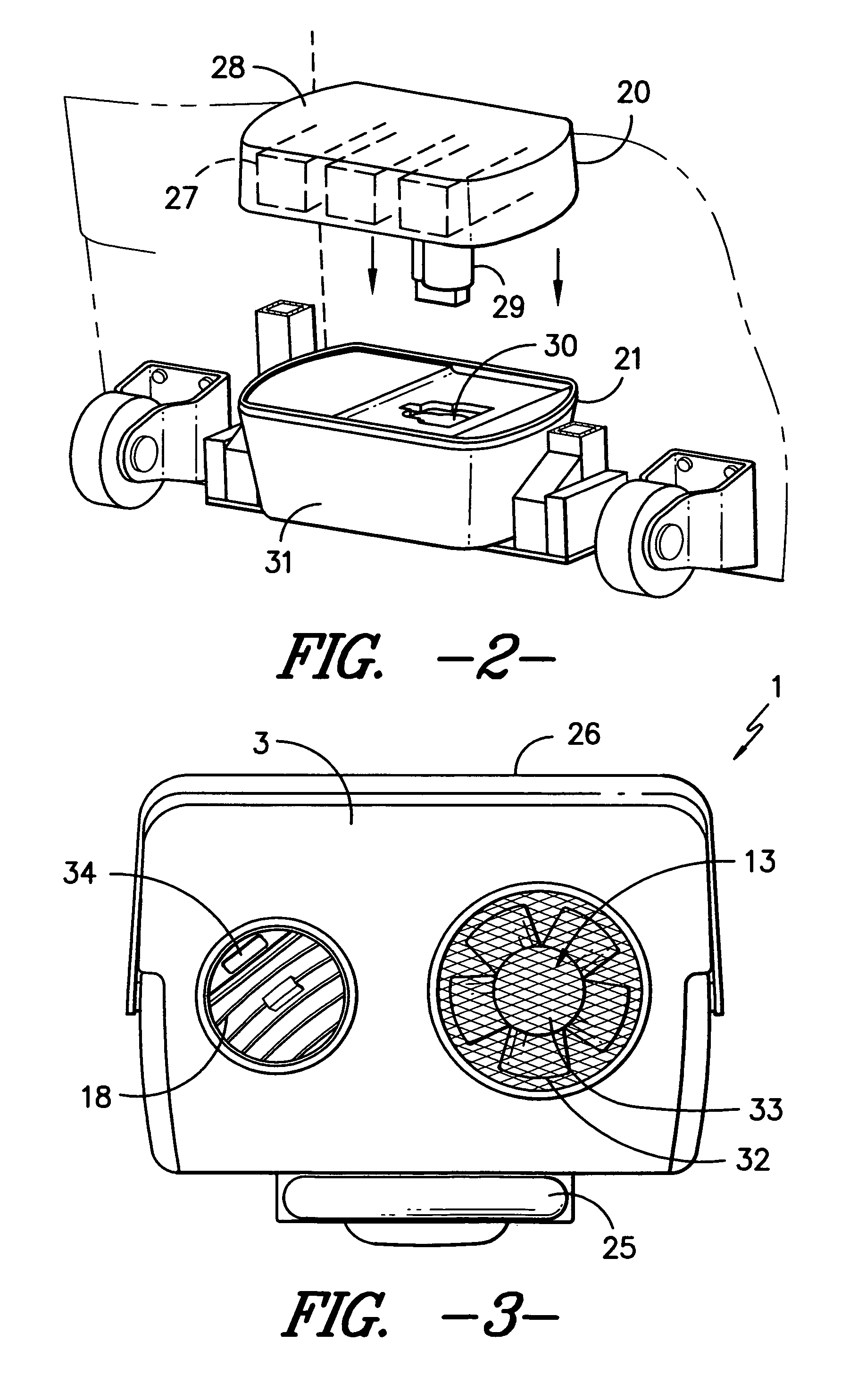Ice chest air conditioner
a technology of air conditioner and chest, which is applied in the field of portability of air conditioners, can solve the problems of increasing the amount of space required to operate the device, system suffer from one or more, and many devices lack portability
- Summary
- Abstract
- Description
- Claims
- Application Information
AI Technical Summary
Benefits of technology
Problems solved by technology
Method used
Image
Examples
Embodiment Construction
[0055]Without limiting the scope of the invention, a detailed description of the invention and the drawings is hereinafter set forth. All of the United States patents, which are cited in the specification, are hereby incorporated by reference.
[0056]FIG. 1 is a 3-dimensional view of the back side and lid of the chest. Chest 1 is comprised of body 2 and lid 3, and has a cuboid shape. Body 2 has sides 2a-2d and bottom 2e. Body 2 has rim 4 at its upper edge. Lid 3 is attached to body 2 at rim 4 by hinges 5, which allow lid 3 to swing up, for access to the contests of the chest. Lid 3 rests on and is supported by rim 4 along the side of lid 3 opposite hinges 5, as well as the portion of rim 4 between hinges 5, when the lid is closed.
[0057]A portion of chest 1 is cut away to show ice 6 packed into the interior of the chest. The sides of body 2 are made up of an exterior shell 7, insulation 8 and interior shell 9. The exterior and interior shell may be constructed out of metal, for example...
PUM
 Login to View More
Login to View More Abstract
Description
Claims
Application Information
 Login to View More
Login to View More - R&D
- Intellectual Property
- Life Sciences
- Materials
- Tech Scout
- Unparalleled Data Quality
- Higher Quality Content
- 60% Fewer Hallucinations
Browse by: Latest US Patents, China's latest patents, Technical Efficacy Thesaurus, Application Domain, Technology Topic, Popular Technical Reports.
© 2025 PatSnap. All rights reserved.Legal|Privacy policy|Modern Slavery Act Transparency Statement|Sitemap|About US| Contact US: help@patsnap.com



